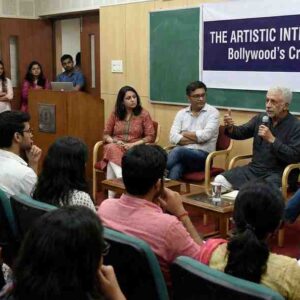Key Metrics (Academy Awards 2025):
• Best Picture:Anora(5 awards including Best Picture and Best Director)
• Acting Wins: Mikey Madison (Best Actress), Adrien Brody (Best Actor)
• Women Nominees in Top Categories: 27% (down from 33% in 2024)
• Women of Color in Nominee Pool: 3.9% (Source: Academy DEI Progress Report 2025)
• Number of Non-English Language Films Nominated: 9, highest in Oscars history
• Viewership: 22.6 million (ABC Official Ratings)
Global Recognition Expands, but Gaps Persist
The 97th Academy Awards, held in March 2025, reflected the global evolution of cinema while simultaneously reigniting debates on inclusion. WithAnora, a dark indie drama by Sean Baker, sweeping five major awards, the Academy signaled its growing recognition of smaller, story-driven films. However, despite increased international participation, questions surrounding diversity and equitable representation remain front and center.
The Academy’s DEI Progress Report 2025 revealed that only 27% of top-category nominees were women—down from 33% the previous year—while representation of women of color stood at just 3.9%. These numbers have sparked concern among critics and advocacy groups, suggesting that high-profile wins may overshadow deeper systemic stagnation.
A Triumph for Independent and Global Cinema
For the first time in Oscars history, nine non-English films were nominated across major categories, a record that included entries from South Korea, India, Mexico, and Germany.The Monk and the Machine(India) andThe Last Station(Germany) were praised for their narrative boldness and visual innovation.
Best Picture winnerAnora, a gritty American indie production distributed by Neon, earned acclaim for its realistic portrayal of a Brooklyn stripper’s chaotic life. The film’s modest budget and unconventional subject matter resonated with audiences and critics, reaffirming the Academy’s increasing openness to non-mainstream narratives.
Controversies and Cultural Tensions
This year’s Oscars were not without friction. The inclusion ofKintsugi, a Japanese-French co-production, in the Original Screenplay category led to a formal protest by a Hollywood studio, arguing eligibility discrepancies. Meanwhile, several social media campaigns highlighted the underrepresentation of Latin American and Middle Eastern filmmakers, despite multiple international submissions.
The Academy also faced criticism for excluding prominent female directors from the Best Director category. Despite critical success, names like Ava DuVernay and Kaouther Ben Hania were missing from the final list—prompting renewed calls for transparency in the nomination process.
Institutional Shifts and Reforms
To address long-standing criticism, the Academy has continued to implement its Representation and Inclusion Standards, which will become mandatory for Best Picture eligibility in 2026. These guidelines require films to meet at least two of four criteria related to on-screen representation, creative leadership, industry access, and audience development.
Additionally, the Academy announced the expansion of its international voting pool, with 202 new members inducted from over 50 countries. The objective: build a more balanced, inclusive, and globally reflective voting base.
Conclusion: A Work in Progress
The 2025 Oscars illustrated both the possibilities and pitfalls of institutional reform. While the recognition of global cinema and independent voices has grown, the statistical underrepresentation of women and minorities remains a structural issue.
As the Academy approaches its centenary, its challenge will be to ensure that diversity is not episodic or symbolic—but embedded in its framework and ethos. Until then, each award season remains both a celebration and a reckoning.












